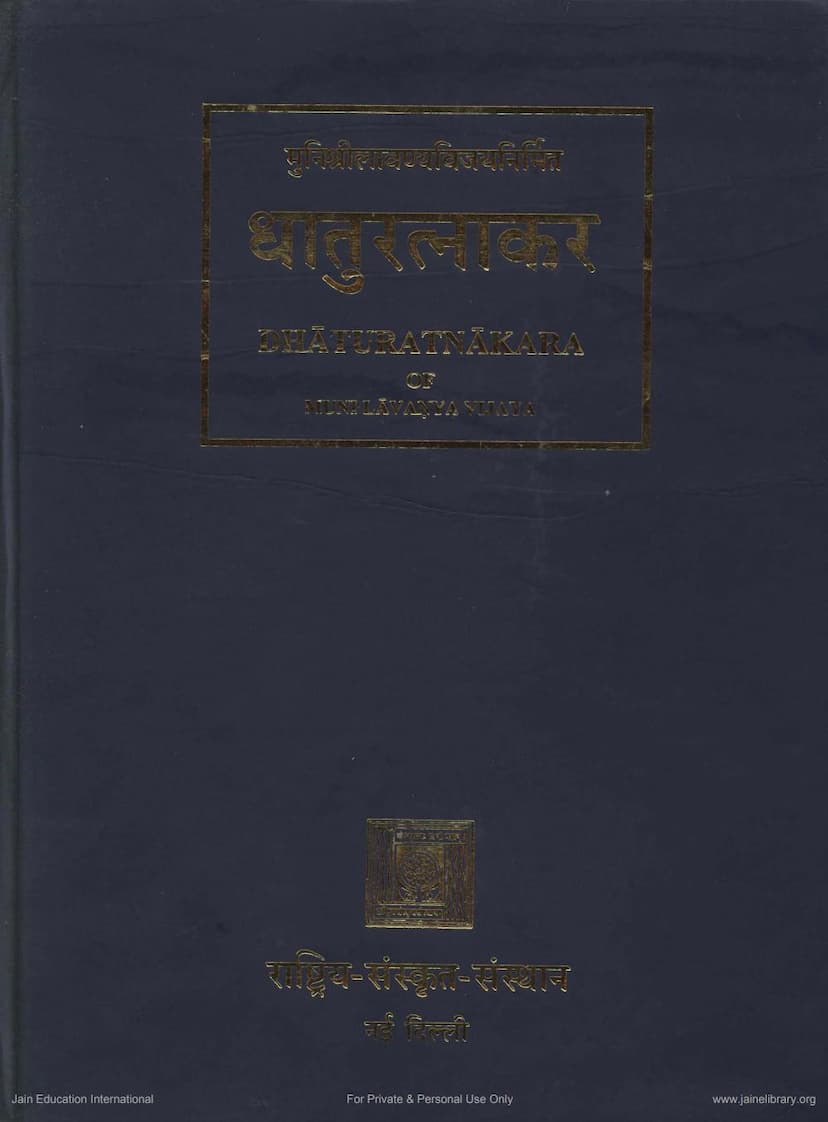Dhaturatnakar Part 2
Added to library: September 1, 2025
Loading image...

Summary
The text provided is the second part of the "Dhaturatnakar" by Muni Lavanyasuri, published by Rashtriya Sanskrit Sansthan, New Delhi. This volume focuses on the 'niganta prakriya', which deals with the formation of causative verbs in Sanskrit grammar.
Here's a breakdown of the content based on the provided text:
- Title and Author: The book is titled "Dhaturatnakara" (धातुरातनाकर), specifically the second part, focusing on "niganta prakriya" (णिगन्त प्रक्रिया). The author is Muni Lavanya Vijaya Suri.
- Publisher and Publication Details: It's published by Rashtriya Sanskrit Sansthan, New Delhi, with a reprint edition in 2006. The price for the 1-5 parts is mentioned as Rs. 1665.00.
- Foreword/Message: A message from Arjun Singh, the Human Resource Development Minister of India, highlights the importance of reprinting rare and well-edited Sanskrit texts to make them accessible to scholars, students, and the general public, promoting Sanskrit knowledge.
- Author's Biography: Pages 8 and 9 provide biographical details of Muni Lavanya Vijaya Suri, mentioning his birth, initiation, various academic titles (like Vyakaran Vachaspati, Shastra Visharad, Kaviratna), and the extensive list of his works, including commentaries.
- Core Content - Niganta Prakriya:
- The text begins with an invocation to deities and gurus.
- The core of the text (starting from page 10) is a detailed exposition of the ṇic (णि) augment in Sanskrit verbs, which is used to form causative verbs. The author discusses the concept of the 'causer' (प्रयोक्ता) and the 'caused' (प्रयुज्यमान), explaining how the ṇic affix changes the meaning of the root verb to indicate causation.
- It delves into the nuances of when the ṇic affix is applied, the different types of 'actions' or 'businesses' (व्यापार) that lead to causation (e.g., prescription/sending - प्रेषण, learning/instruction - अध्येषण), and the resulting grammatical structures.
- The text elaborates on various contexts where causation is expressed, providing examples like:
- Vāsayati (वासयति) - He causes to live (from √vas - to live).
- Kārayati (कारयति) - He causes to do (from √kṛ - to do).
- Rājānamāgamayati (राजानमागमयति) - He causes the king to come (from √gam - to go).
- Kansaṃ ghātayati (कंसं घातयति) - He causes Kamsa to be killed (from √han - to kill).
- The text also discusses the interaction between the ṇic affix and other grammatical rules, such as case endings (e.g., the use of the accusative case for the caused agent), the rules for forming participles, and potential conflicts with other affixes.
- The latter part of the provided text (from page 14 onwards) is a comprehensive listing of Sanskrit verb roots belonging to the Bhvadi-gana (भ्वादिगण), along with their causative forms (ṇyanta forms) conjugated across different tenses, moods, and voices (parasmaipada and atmanepada). This section is essentially a detailed verb conjugation table specifically for causative verbs derived from these roots. It systematically lists the forms for numerous roots like bhū (भू), pā (पा), ghrā (घ्रा), dhmā (ध्म), sthā (स्था), mnā (म्ना), dā (दा), ji (जि), jri (ज्रि), kṣi (क्षि), i (इ), du (दु), śu (शु), dhu (धु), smṛ (स्मृ), etc., covering all their verbal aspects.
In essence, "Dhaturatnakar Part 2" is a highly technical and exhaustive grammatical treatise on the causative formation of Sanskrit verbs derived from the Bhvadi root class, presenting the theoretical principles and then systematically illustrating them with conjugations of numerous roots.